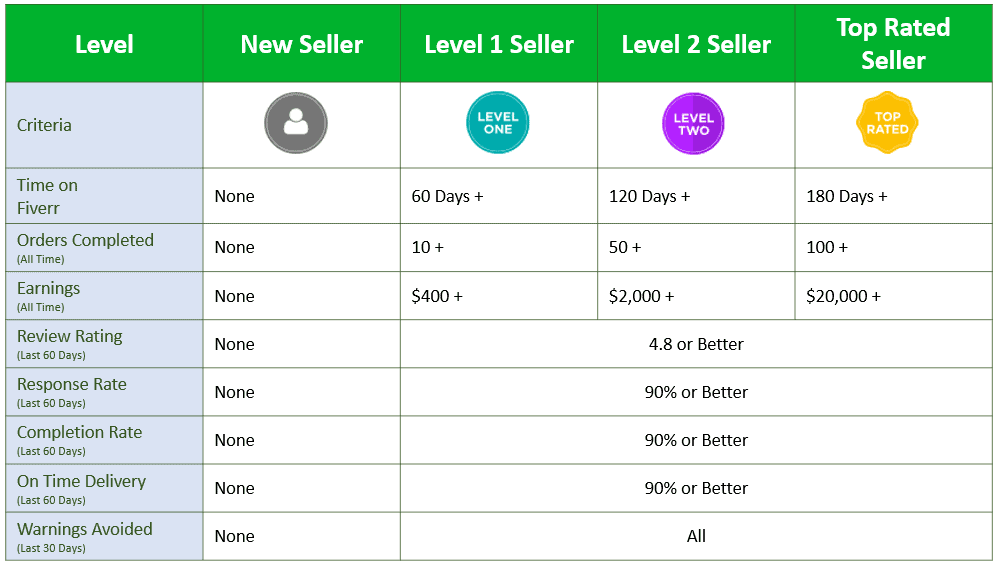Fiverr: Scaling Productized Services

Fiverr is a marketplace of services that connects freelancers (sellers) to people or businesses looking to hire (buyers).
Fiverr is a marketplace of services that connects freelancers (sellers) to people or businesses looking to hire (buyers). In Bessemer’s investment memo, these services are referred to as “gigs” and are smaller than the projects sourced through marketplaces such as eLance and ODesk, but require more skill and creativity than the tasks performed at Mechanical Turk. Fiverr’s strategy was to “Productize services with transparency” with the idea that “you don’t hire people, you buy products” that are created by people. Fiverr’s cofounder, Micha, says on an NFX podcast “These products are being performed by people, but you know exactly who you work with because of our reputation system and the way you look at profiles. You know exactly what you’re going to get because it was predefined when you’re going to get it and exactly how much you’re going to pay. That level of transparency never existed before for businesses.”
Initial Scaling Strategy
Fiverr started in 2010 as Workdeal during a personal challenge the founder faced when having to set up a customized blogpress website. He realized there was an untapped market for a wide variety of services that required some level of knowledge and skill, but did not require a full professional to accomplish it.
This idea led to two of the key principles that drove their early growth. First, any legitimate service can be offered by anyone regardless of their qualifications or background. This allowed them to appeal quickly to their supply side. The second was that every service would be priced at $5 (eventually leading to their name, Fiverr) to appeal to the supply side of the market place by asking with the question of “what would you do for $5” in an attempt to populate the site with any and all gigs. This principle had a two-sided effect. On the supply side, while it allowed any kind of seller to offer any service, it also forced them to differentiate on quality of service and be extremely efficient in their offerings. More importantly, on the buyer side, $5 was a low enough price that it removed the friction of deciding whether a service was a worthwhile purchase. Fiverr charged 20% of the transaction value as fees.
Upmarket Disruption
By 2012, with 650,000 services listed on Fiverr, they had captured a significant portion of the untapped low end of the market and saw an opportunity to move upmarket. They launched Levels, a reputation-based promotion system to help entrepreneurs build their business and earn more revenue. After sellers successfully complete at least 10 transactions, they unlock advanced up-selling tools to offer Gig extras and charge more for their services. Within 6 months, over 30 percent of Fiverr transactions are greater than the site’s starting price of $5. This allowed them to access the more premium services market.

Scalability and Sustainability
While Fiverr has been mostly successful in its attempt to curb disintermediation by preventing contact details exchange, they have a demand issue. While most marketplaces are supply constrained, Fiverr is demand constrained. Micha said on the NFX podcast “The reality is that freelancers came to us organically. We never acquired supply. We’ve actually had plenty of it.” Fiverr launched Industry Stores to bundle services in specific verticals. They changed their organizational structure to reflect this concept, with “vertical managers” responsible for specific industry’s and related gigs. While the Chinese company ZBJ saw a similar strategy as moving towards being a “general contractor” where they took on the role of breaking up larger tasks, Fiverr viewed this as “productizing services” with gigs related to a specific industry living together in one store.

A key issue Fiverr will face in its growth moving forward are the Gen AI tools available. The kinds of tasks Fiverr has relied heavily on where you don’t need a professional to accomplish it, like logo or website design, can be done in seconds for free by a myriad of tools available today. I believe a three-step strategy is required for Fiverr to continue its growth with AI:
- Use completed gigs as templates for users that can be used for a lower charge. For instance, if a seller has already designed a logo for $5, make the logo available to a buyer for a price lower than Gen AI tools charge.
- Integrate AI tools within Fiverr and change sellers into “editors” in addition to their current role. While Gen AI tools do a great job at the first task, users often find it difficult to make edits. Access to assistance while users attempt AI tools increases the likelihood they will use Fiverr to do it.
- Integrate tasks within industry stores that would have to be done separately with different tools.
Listen to the podcast with NFX here: https://podcast.nfx.com/episodes/micha-kaufman-fiverr



This is very informative Screeni! I have in fact never heard of Fiverr before but what a brilliant idea the founders have in the beginning! The thinking of setting a $5 fix price is just really cool and innovative. However, I really wonder whats their margins like. Just like the question for ZBJ, whats their business models and how much they are making through each $5 transactions? Their sustainability issue with GenAI is also pressing, essentially meaning cheap human labors (cost of living and education) competing with GenAI (cost of training).
Thanks Screeni! I also used Fiverr several times and found it helpful. The multinational online marketplace business model is very attractive. I wonder what does Fiverr’s demographic look like and which countries has the most gigs and users. How does Fiverr manage the multinational difficulty such as language on the platform? I also love the reputation-based promotion system, which builds a community and motivates gigs to provide more high-quality services.
This is super cool Sreeni! What do you think differentiates Fiverr from other gig work platforms? Is the key thing that suppliers post tasks they can do, and then customers buy them (as opposed to having customers post their needs and then having people apply/agree to do those jobs). Why is that more appealing to customers, or perhaps it isn’t (and why demand ends up being their constraint)? It seems like on platforms that do the flip side getting a supply of workers that can do a customer-driven task in a timely manner is the difficulty.
Hi Sreeni! Can you talk a bit more about how Fiverr can guarantee product quality and transparency to their customer? Is it because these tasks are so unsophisticated that there’s not much room for error? Or is it that at a $5 price point, buyers just aren’t as choosy, and if a seller disappoints with their service, that seller’s reputation suffers and the buyer can just spend another $5 with another vendor?
I agree with your point that for some of these simpler tasks, even $5 might be too much considering the relative cost of GenAI to reproduce this. As the company has been growing, have they noticed any specific niches that they could really own (much like how ZBJ disintermediated the copyright space)? These kinds of platforms catering to micro-services generally make me nervous because I always imagine that if their buyers do well, eventually they will upgrade to more professional vendors, and so Fiverr always sees their “best customers” churn.